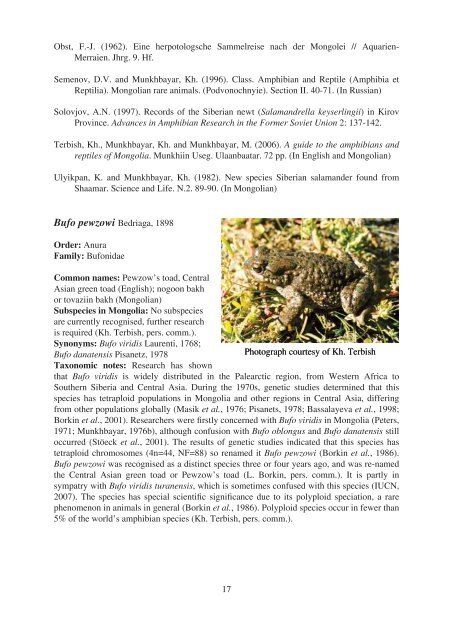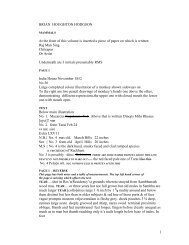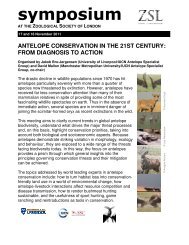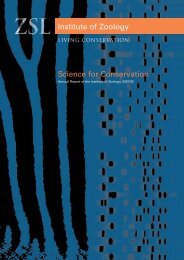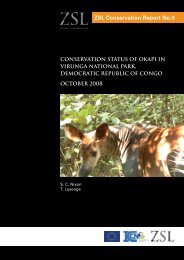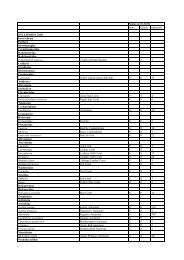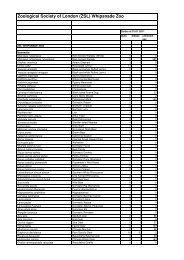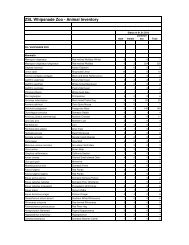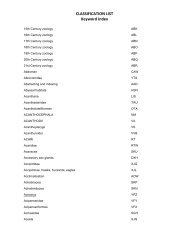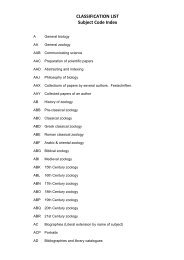Summary Conservation Action Plans for Mongolian Reptiles and ...
Summary Conservation Action Plans for Mongolian Reptiles and ...
Summary Conservation Action Plans for Mongolian Reptiles and ...
You also want an ePaper? Increase the reach of your titles
YUMPU automatically turns print PDFs into web optimized ePapers that Google loves.
Obst, F.-J. (1962). Eine herpotologsche Sammelreise nach der Mongolei // Aquarien-<br />
Merraien. Jhrg. 9. Hf.<br />
Semenov, D.V. <strong>and</strong> Munkhbayar, Kh. (1996). Class. Amphibian <strong>and</strong> Reptile (Amphibia et<br />
Reptilia). <strong>Mongolian</strong> rare animals. (Podvonochnyie). Section II. 40-71. (In Russian)<br />
Solovjov, A.N. (1997). Records of the Siberian newt (Salam<strong>and</strong>rella keyserlingii) in Kirov<br />
Province. Advances in Amphibian Research in the Former Soviet Union 2: 137-142.<br />
Terbish, Kh., Munkhbayar, Kh. <strong>and</strong> Munkhbayar, M. (2006). A guide to the amphibians <strong>and</strong><br />
reptiles of Mongolia. Munkhiin Useg. Ulaanbaatar. 72 pp. (In English <strong>and</strong> <strong>Mongolian</strong>)<br />
Ulyikpan, K. <strong>and</strong> Munkhbayar, Kh. (1982). New species Siberian salam<strong>and</strong>er found from<br />
Shaamar. Science <strong>and</strong> Life. N.2. 89-90. (In <strong>Mongolian</strong>)<br />
Bufo pewzowi Bedriaga, 1898<br />
Order: Anura<br />
Family: Bufonidae<br />
Common names: Pewzow’s toad, Central<br />
Asian green toad (English); nogoon bakh<br />
or tovaziin bakh (<strong>Mongolian</strong>)<br />
Subspecies in Mongolia: No subspecies<br />
are currently recognised, further research<br />
is required (Kh. Terbish, pers. comm.).<br />
Synonyms: Bufo viridis Laurenti, 1768;<br />
Bufo danatensis Pisanetz, 1978<br />
Taxonomic notes: Research has shown<br />
that Bufo viridis is widely distributed in the Palearctic region, from Western Africa to<br />
Southern Siberia <strong>and</strong> Central Asia. During the 1970s, genetic studies determined that this<br />
species has tetraploid populations in Mongolia <strong>and</strong> other regions in Central Asia, differing<br />
from other populations globally (Masik et al., 1976; Pisanets, 1978; Bassalayeva et al., 1998;<br />
Borkin et al., 2001). Researchers were fi rstly concerned with Bufo viridis in Mongolia (Peters,<br />
1971; Munkhbayar, 1976b), although confusion with Bufo oblongus <strong>and</strong> Bufo danatensis still<br />
occurred (Stöeck et al., 2001). The results of genetic studies indicated that this species has<br />
tetraploid chromosomes (4n=44, NF=88) so renamed it Bufo pewzowi (Borkin et al., 1986).<br />
Bufo pewzowi was recognised as a distinct species three or four years ago, <strong>and</strong> was re-named<br />
the Central Asian green toad or Pewzow’s toad (L. Borkin, pers. comm.). It is partly in<br />
sympatry with Bufo viridis turanensis, which is sometimes confused with this species (IUCN,<br />
2007). The species has special scientifi c signifi cance due to its polyploid speciation, a rare<br />
phenomenon in animals in general (Borkin et al., 1986). Polyploid species occur in fewer than<br />
5% of the world’s amphibian species (Kh. Terbish, pers. comm.).<br />
17<br />
Photograph courtesy of Kh. Terbish


